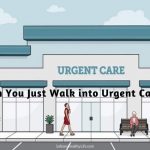
Image Credit: Pexels
There is nothing more disconcerting than having a child who is sick or experiences a sudden medical emergency. At a moment’s notice, it’s hard to decide where to go, the local emergency room or the urgent care center. Each facility has its own set of diagnostic tools and some are more equipped at diagnosing and performing specific treatments. Here are just a few examples of some common ailments and what your best course of action may be to resolve the issue.
Flu-Like Symptoms
The flu season occurs during the fall and winter months. Influenza can be highly contagious. Keep in mind there are different flu types and the symptoms of the flu can also duplicate other underlying conditions in your child. Some common signs to look for include:
- Fever
- Body aches
- A cough
- Nasal and chest congestion
- Chills
- Extreme tiredness or lethargy
- Vomiting and diarrhea
With most cases of the flu, symptoms typically only last from 24 to 48 hours and get better over time. If your child is still experiencing symptoms after a couple of days or is running a fever over 100 degrees, it may be time to visit the doctor. If you can’t get in to see his pediatrician, try urgent care. They should have the capability to test for the flu and prescribe antiviral medication and cough suppressants if necessary. Also, an antibiotic may be prescribed if there is an underlying infection involved. Otherwise, your doctor will recommend rest and plenty of fluids to help combat dehydration and help restore your child’s electrolyte balance. If your child is dehydrated, an EKG Machine may be used to rule out any heart arrhythmias that may arise due to an electrolyte imbalance. If a problem is detected, the doc may direct you to the ER for further evaluation. In most cases, riding out the virus is the best way to treat the flu.
Cuts and Abrasions
Falling off of a bike or running into a sharp object can instantly cause an area to bruise or be cut open. Within seconds, a fall can turn into a catastrophe once the skin breaks and the bleeding starts. Most cuts can be easily remedied with antibacterial ointment and a secure bandage. But what happens when the cut won’t stop bleeding? Or there is a possibility of more significant damage under the surface? This may warrant a trip to either urgent care or the emergency room. Both facilities should have reliable medical professionals and the capabilities to perform a suture stitch and secure the cut. But if your child is bleeding profusely or uncontrollably, get to the nearest emergency room immediately. Many urgent care centers can’t treat those types of emergencies and if it’s a life-threatening issue, an ambulance will have to be called.
Broken Bones
Do you suspect that your child may have a broken bone? If they’ve been injured and it affects a joint or bone, it can be difficult to determine the severity of the injury. Although some telltale signs that warrant a trip to the ER include:
- Swelling at the injury site
- Visible bone or cartilage
- Unable to walk, move or put pressure on the area
- Extremity that appears to point or rest in the opposite direction as intended
Broken bones definitely need to be treated in an emergency room. Not only are there x-ray machines, CT and MRI machines in-house, they also have the tools and capabilities to perform emergency surgery if needed. They also have the casting capabilities to mobilize the broken area to help restore support and boost recovery.
Chest Pain
With kids, it can be hard to decipher whether they are telling the truth or exaggerating at times when it comes to explaining how much pain they’re in. If they talk about their chest hurting, this is something to take seriously. Most children with heart disease or CHD-a congenital heart defect are diagnosed at birth, but some cases can go undetected or worsen over time. A heart defect or another underlying disease or condition can also trigger chest pain and discomfort in children. If your child complains about a consistent, nagging sharp pain, it’s time to get it checked out. Your local emergency room is recommended. There they can take vitals, gather other specimens and perform diagnostic testing to determine if there is a problem very quickly. If so, treatment will begin right away.
Worrying about your child is inevitable. Make sure they get prompt treatment at the right location. It could be a matter of life or death.
About The Author:
Jan Vespremi is an alternative health writer based out of San Diego, Calif. When she’s not writing, you can find her practicing yoga, hiking and cuddling with her pup.




